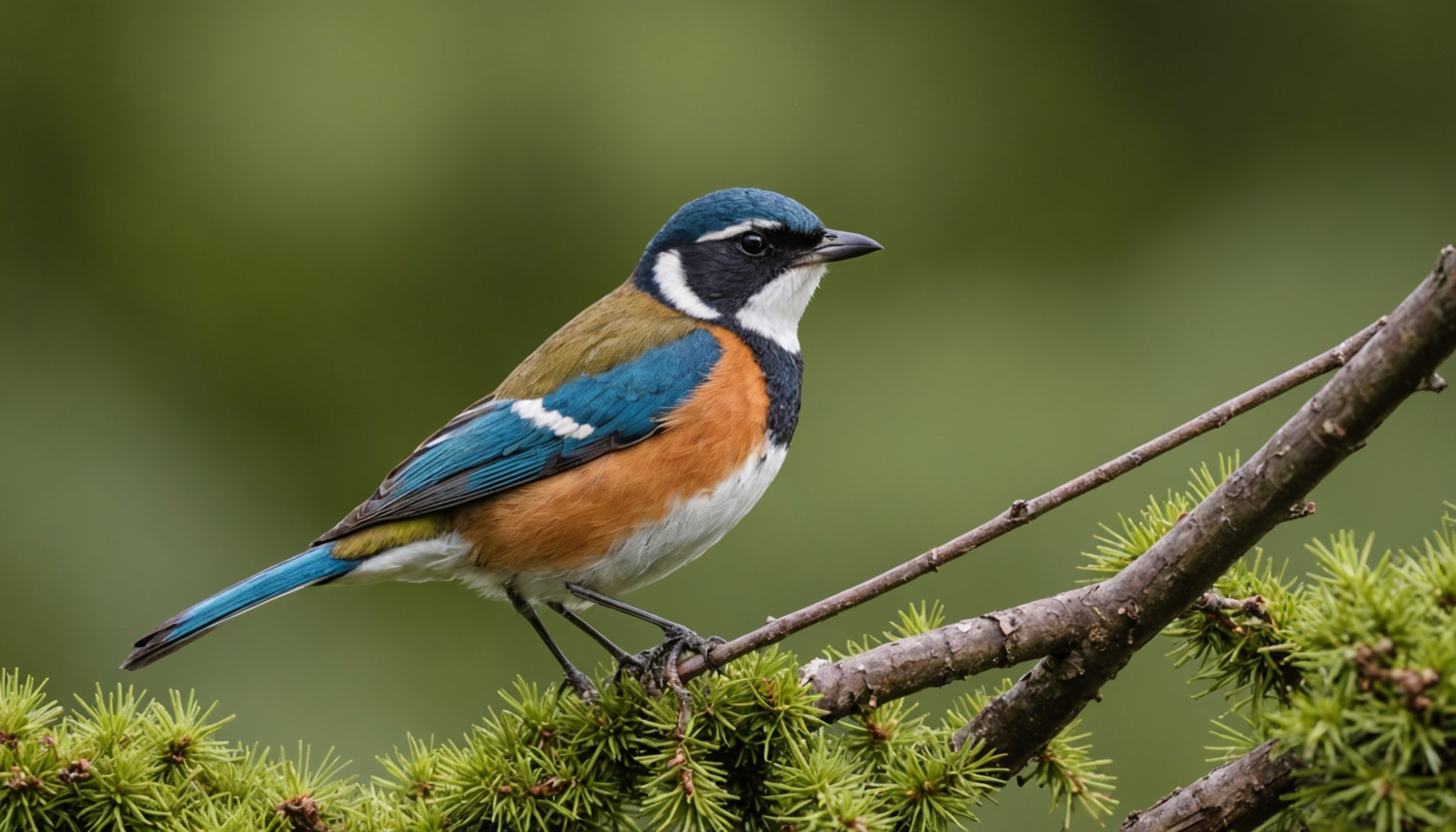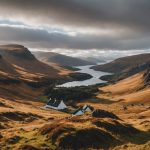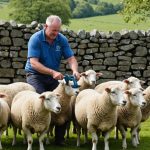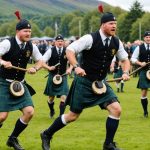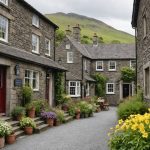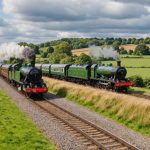Camping in the UK offers an extraordinary opportunity to connect with nature and capture the beauty of birdlife. By venturing into diverse landscapes, from serene woodlands to coastal wetlands, you can enhance your photography skills while enjoying the great outdoors. This guide provides essential tips on planning your camping trip, selecting the best locations, and using the right techniques to capture stunning bird photographs. Embrace the adventure and discover how to turn fleeting moments into breathtaking images.
Overview of Bird Photography in the UK
Bird photography is a captivating pursuit that combines the art of photography with the thrill of observing wildlife. In the UK, this activity holds particular significance due to its diverse avian population. Enthusiasts are drawn to the challenge of capturing the beauty and behavior of unique bird species, many of which are endemic to the region.
Topic to read : Ultimate Guide to Keeping Your Camping Gear Safe and Secure at UK Festivals
The UK is home to a variety of distinctive bird species, making it a prime location for photographers. From the vibrant puffins on the coast to the elusive nightjars in heathlands, each species offers a unique subject for photography. This diversity not only enriches the experience but also presents opportunities to document rare and endangered species, contributing to conservation efforts.
For those keen on birdwatching and photography, several regions stand out. The Scottish Highlands, known for their rugged landscapes, provide a habitat for golden eagles and ptarmigans. Meanwhile, the wetlands of Norfolk offer sightings of avocets and marsh harriers. Each region presents different environments and bird species, making the UK a versatile destination for bird photography. Whether camping in remote areas or exploring local reserves, the UK offers myriad opportunities for both amateur and professional photographers to immerse themselves in the world of bird photography.
Also to see : Ultimate Guide to Keeping Your Camping Food Secure from Wildlife in the UK
Ideal Camping Locations for Bird Photography
Embarking on a bird photography adventure in the UK offers a unique blend of birdwatching and camping. The UK is home to numerous national parks that provide excellent opportunities for both activities. For those seeking the perfect camping locations, consider these top birdwatching sites.
The Lake District National Park is renowned for its picturesque landscapes and diverse avian population, making it a prime choice for photographers. Here, you can find camping sites that offer easy access to bird hotspots, such as the shores of Derwentwater, where you might spot ospreys.
Another excellent location is the Pembrokeshire Coast National Park in Wales. Known for its dramatic cliffs and coastal paths, it provides habitats for puffins and choughs. Campsites in this area often boast stunning views and are equipped with essential amenities, ensuring a comfortable stay.
For accessibility, the Peak District National Park is ideal. It features well-maintained trails and campsites near birdwatching sites, like the Upper Derwent Valley, famous for its goshawks and peregrine falcons. These parks not only offer rich birdlife but also cater to the needs of campers, making them perfect for an immersive bird photography experience.
Essential Equipment for Bird Photography
Embarking on a bird photography expedition requires the right mix of photography gear, camping supplies, and birdwatching equipment. Each plays a crucial role in ensuring a successful and enjoyable experience.
Photography Gear
A reliable camera with a fast shutter speed is indispensable for capturing fleeting moments. Pair it with a telephoto lens, ideally 300mm or longer, to get close to distant birds without disturbing them. A sturdy tripod is also essential to stabilise your shots, especially in low light conditions.
Camping Supplies
Comfortable and durable camping supplies are vital for extended stays in nature. A weather-resistant tent, warm sleeping bag, and portable cooking equipment are must-haves. These ensure you can focus on photography without worrying about the elements.
Birdwatching Equipment
Enhance your birdwatching experience with quality binoculars and a field guide to identify various species. A notebook or digital recorder can help document sightings and behaviours. Additionally, a portable hide or camouflage netting can allow you to observe birds up close without startling them.
Equipped with the right tools, bird photography in the UK becomes not only feasible but deeply rewarding.
Best Times for Birdwatching and Photography
Understanding the seasonal patterns of bird migration is crucial for successful birdwatching and photography. In the UK, spring and autumn are prime times, as many species migrate during these periods. Spring welcomes a variety of birds returning to breed, while autumn sees them preparing for winter journeys.
Timing your photography sessions to coincide with these bird migration seasons can increase your chances of capturing diverse species. Early morning and late afternoon are the best times of day for bird activity. Birds are most active during these cooler hours, offering optimal conditions for photography with softer lighting and less harsh shadows.
When planning your bird photography adventure, consider the seasonal patterns for camping as well. Spring and autumn not only provide rich birdlife but also milder weather, making camping more comfortable. However, always be prepared for sudden weather changes, especially in areas like the Scottish Highlands or the Lake District.
By aligning your birdwatching and photography with these optimal photography times, you can enhance your experience and capture stunning images of the UK's avian diversity.
Techniques for Capturing Stunning Bird Photos
Mastering bird photography requires a blend of technical skill and artistic vision. Understanding key photography techniques can significantly enhance your ability to capture stunning images of birds.
Capturing Motion and Behavior
To photograph birds in motion, use a fast shutter speed to freeze their movements. This is crucial for capturing the intricate details of a bird in flight or during dynamic behaviors. Continuous shooting mode can also help seize the perfect moment without missing a beat.
Framing and Composition Tips
Effective composition is essential for impactful bird photography. Use the rule of thirds to position your subject off-center, creating a more balanced image. Pay attention to the background; a clean, uncluttered backdrop can make your subject stand out. Experiment with angles and perspectives to add depth and interest to your shots.
Utilizing Natural Light
Natural light plays a pivotal role in bird photography. Early morning and late afternoon provide the best lighting conditions, offering soft, warm tones that enhance your subject. Position yourself with the sun behind you to illuminate the bird, highlighting its colors and details. Adjust your camera settings accordingly to make the most of the available light.
Safety Tips While Camping and Birdwatching
When embarking on a birdwatching and camping adventure, ensuring camping safety is paramount. Navigating potential hazards in the wild requires awareness and preparation. Always inform someone of your itinerary and expected return. Carry a map and compass, as mobile signals can be unreliable in remote areas.
Wildlife encounters can be thrilling yet unpredictable. Maintain a respectful distance from animals, and never feed them. This helps prevent dependency and reduces the risk of aggressive behavior. Store food securely to avoid attracting wildlife to your campsite.
Basic first aid knowledge is essential for any camper. Familiarise yourself with treating minor injuries such as cuts, sprains, and insect bites. Carry a well-stocked first aid kit, including antiseptic wipes, bandages, and pain relief medication. Knowing how to respond to more serious situations, like allergic reactions or hypothermia, can be life-saving.
Being prepared and informed enhances your camping and birdwatching experience, allowing you to focus on enjoying the beauty of nature.
Conservation Practices for Birdwatchers
Engaging in bird photography comes with a responsibility to uphold conservation values. Ethical photography is crucial, ensuring that the pursuit of capturing stunning images does not harm the wildlife or their habitats.
To minimise environmental impact, birdwatchers should adhere to certain best practices. Maintain a respectful distance from birds to avoid causing stress or disturbance. Use a telephoto lens to capture images without intruding on their natural space. Avoid altering the environment for a better shot, such as breaking branches or trampling vegetation, as this can disrupt local ecosystems.
Supporting local conservation efforts is another key aspect. Many birdwatching sites are managed by conservation organisations that rely on donations and volunteer work. Consider contributing financially or offering your time to help maintain these vital habitats. Additionally, sharing your photographs with these groups can aid in raising awareness and promoting conservation initiatives.
By embracing ethical photography and supporting conservation, birdwatchers can enjoy their hobby while contributing positively to wildlife protection. This symbiotic relationship ensures that both photographers and birds thrive, preserving the natural beauty for future generations.
Visual Examples and Case Studies
Exploring bird photography through success stories and visual examples can inspire both novice and seasoned photographers. Photography examples from across the UK showcase the diversity and beauty of avian life.
One notable project is the "Puffin Parade," which captures the vibrant puffins of Skomer Island. This series highlights the photographer's dedication, spending weeks observing these charismatic birds to capture their playful antics and unique features. Such birdwatching experiences often require patience and perseverance, illustrating the commitment needed to achieve stunning results.
Another success story is the "Golden Eagles of the Scottish Highlands." This project showcases the majestic eagles in their natural habitat, emphasizing the importance of understanding bird behavior for effective photography. By studying their patterns, the photographer was able to capture rare moments of eagles in flight and at rest.
Personal anecdotes from experienced photographers also offer valuable insights. One photographer recounts an encounter with a shy bittern in the Norfolk Broads, sharing how stealth and a telephoto lens were crucial in capturing this elusive bird. These stories not only inspire but also provide practical tips for aspiring bird photographers, highlighting the blend of skill and passion required in this art form.
Resources for Further Learning and Gear Recommendations
Exploring bird photography can be greatly enhanced by tapping into the right photography resources and gear. To deepen your understanding and skills, consider these recommended materials and guides.
Recommended Books and Online Resources
Books like "The Art of Bird Photography" provide comprehensive insights into techniques and birdwatching guides. Online platforms such as NatureScapes.net offer forums and articles where photographers share tips and experiences, fostering a community of learning.
Gear Reviews and Buying Guides
When selecting camping gear and photography equipment, consult detailed reviews and buying guides. Websites like OutdoorGearLab evaluate the latest tents and sleeping bags, ensuring comfort during your outdoor adventures. For photography gear, Digital Photography Review offers in-depth analyses of cameras and lenses, helping you make informed decisions.
Workshops and Courses
Enhance your skills through workshops and courses focused on bird photography. Organisations like the Royal Photographic Society offer classes ranging from beginner to advanced levels. These sessions provide hands-on experience and expert guidance, allowing you to refine your technique and capture stunning bird images.

